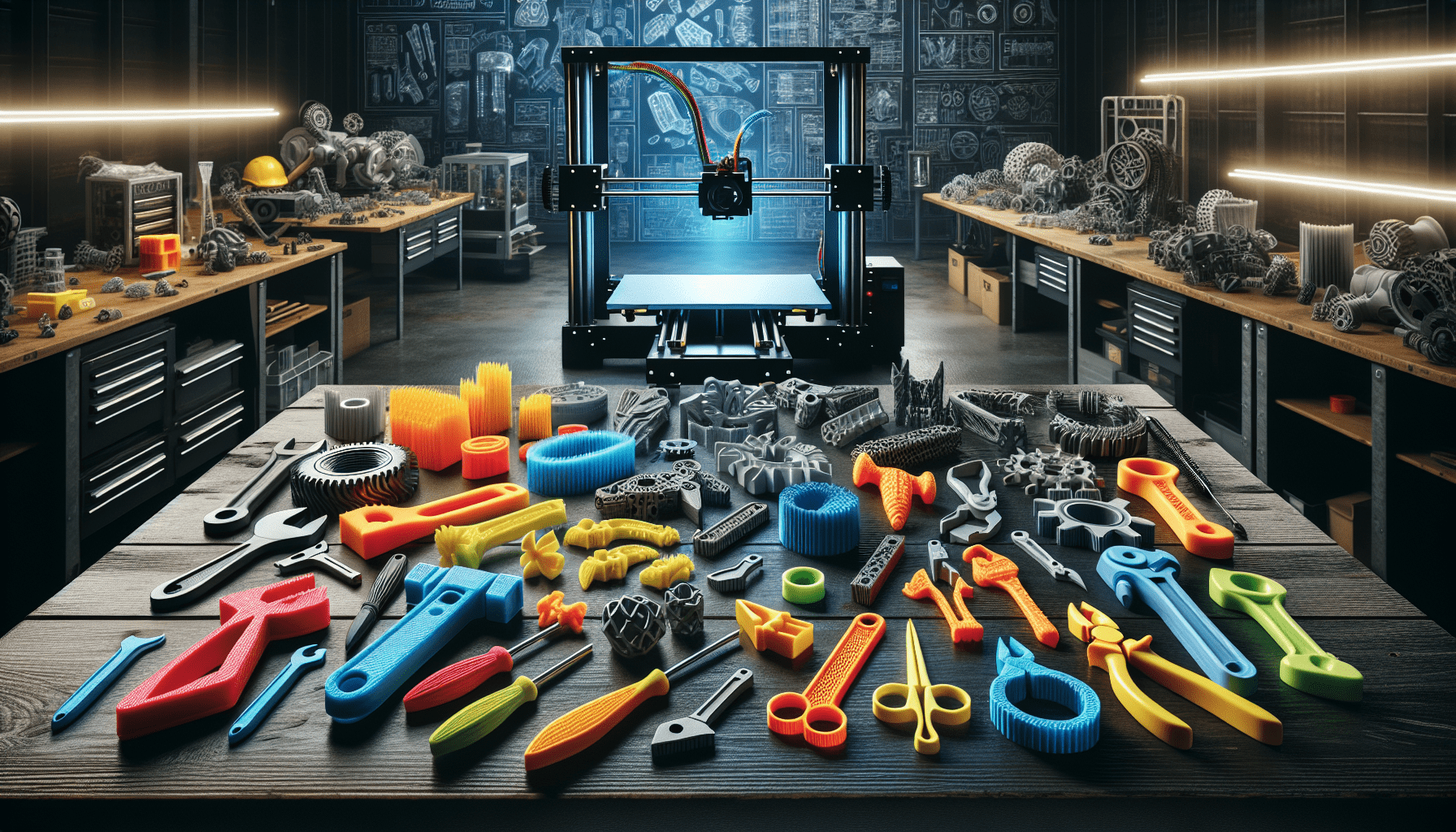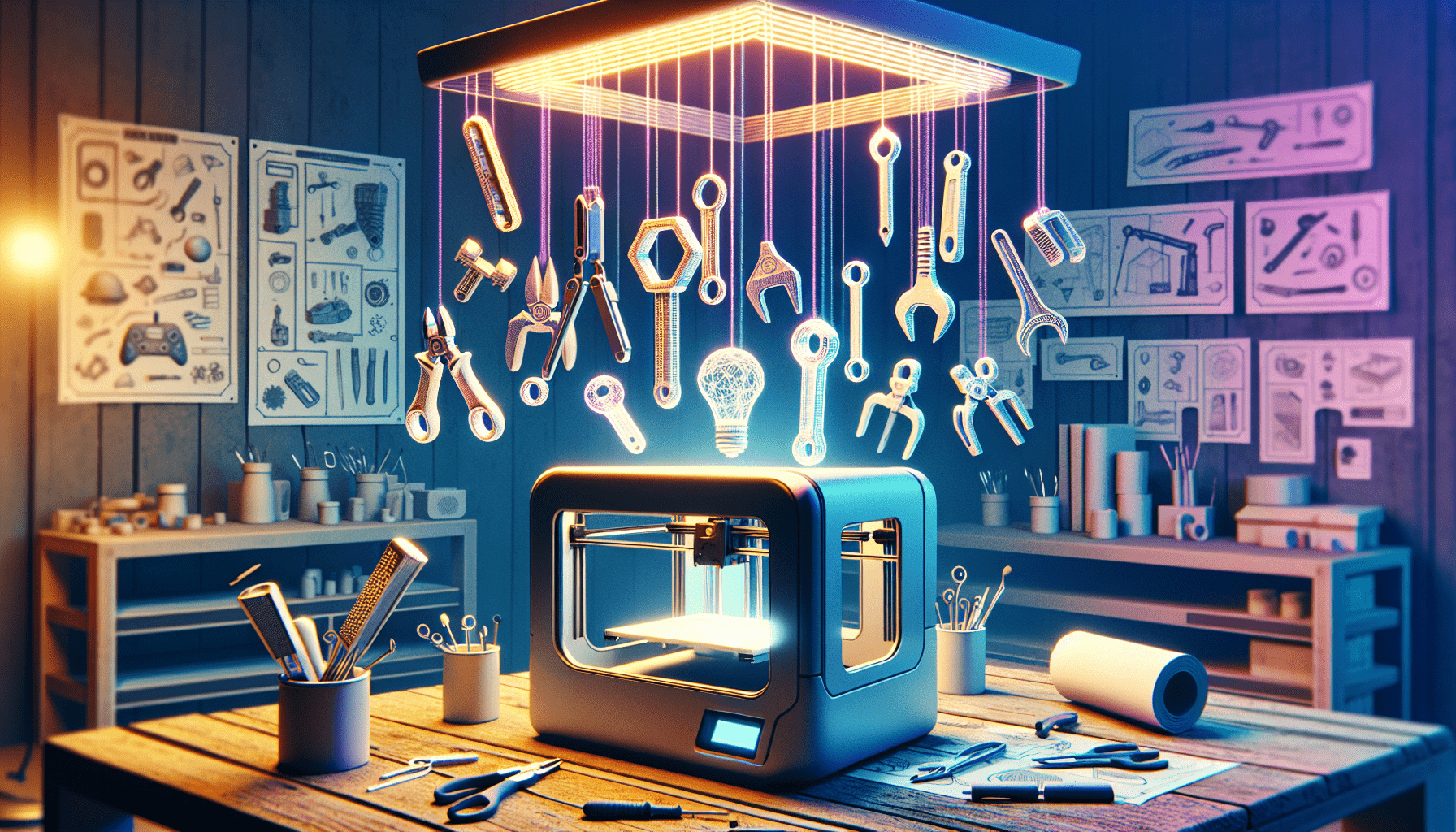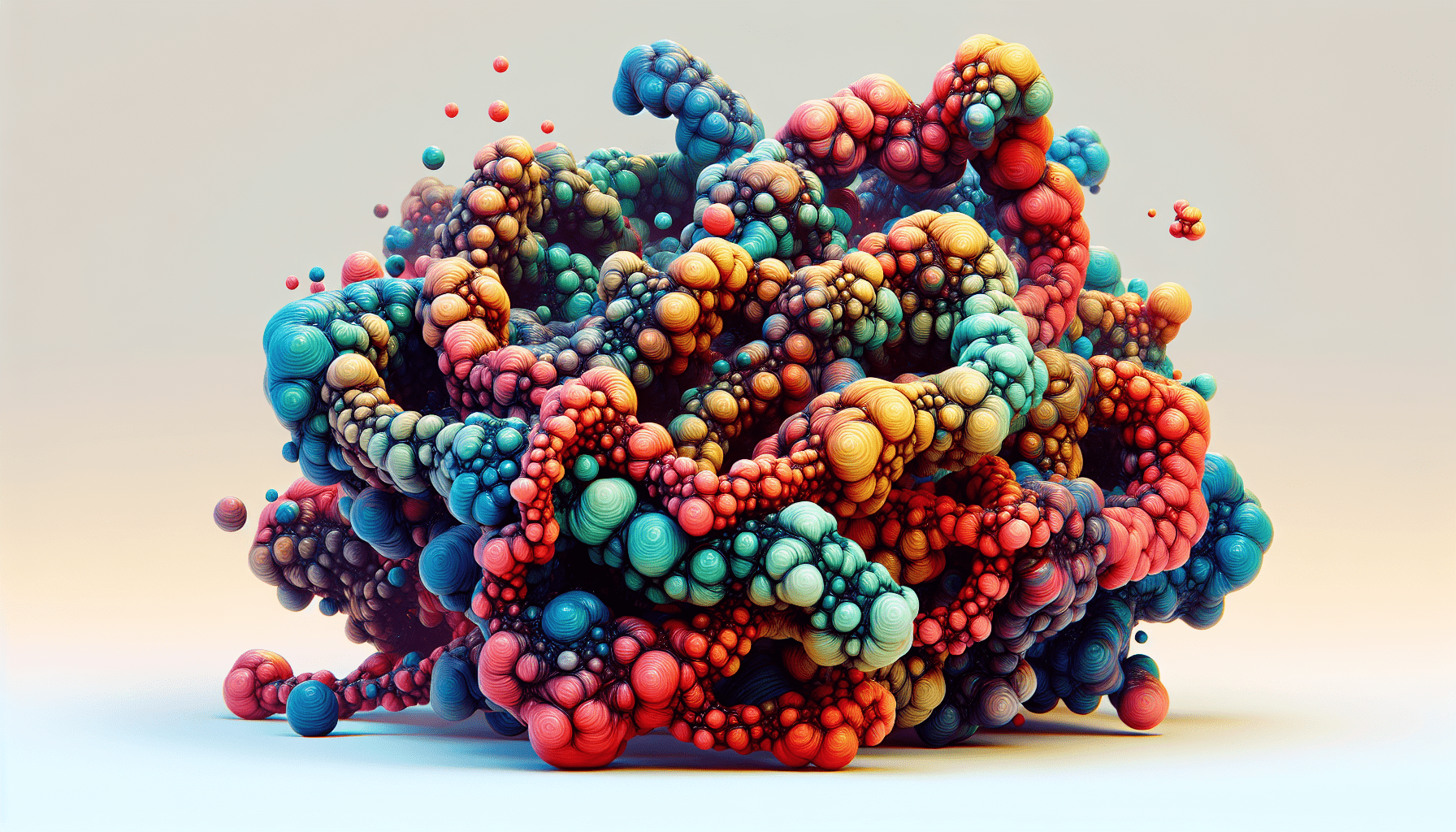ANYCUBIC 10K Resin 3D Printer, Photon Mono 4 LCD 3D Printer with 7-inch Mono Screen, Upgraded LighTurbo Matrix and Printing Platform, Printing Size of 6.04''x3.42''x6.49''
$159.99 (as of June 18, 2025 23:32 GMT +00:00 - More infoProduct prices and availability are accurate as of the date/time indicated and are subject to change. Any price and availability information displayed on [relevant Amazon Site(s), as applicable] at the time of purchase will apply to the purchase of this product.)In the video titled “Top 10 3D Printable Tools Every Maker Should, Like, Make,” presented by Zack Freedman, you will discover a collection of nine highly useful 3D printable tools, along with one tool that falls short. These tools are not only free to access, but they are also straightforward to print. They range from gadgets that simplify soldering and offer new 3D printing options to impressive tools that are sure to make an impact on fellow makers. The video even provides model author links and credits for easy reference. Additionally, Zack teases a preview of the next episode, which will focus on his mobile workshop go bag. So, if you’re a maker looking to enhance your electronic projects, this article is a must-read.
Hello hardware hackers! In today’s article, “Top 10 3D Printable Tools Every Maker Should, Like, Make,” presented by Zack Freedman, you can join him on an exciting journey to uncover ten essential prints that will revolutionize your hobbyist pursuits. From a Mouse Bungee to a Dispenser for Syringe of Flux or Solder Paste, these tools are designed to simplify your work, accommodate various needs, and enhance your overall maker experience. Don’t miss out on the special surprise for all you Dremel fans and stay tuned for an upcoming episode that will reveal what’s in Zack’s mobile workshop go bag. So, roll up your sleeves and prepare to dive into the world of exciting 3D printable tools that every maker should consider.
Top 10 3D Printable Tools Every Maker Should, Like, Make
Mouse Bungee
Description of the mouse bungee
The mouse bungee, designed by Peter Merhaut, is a clever gadget that is used to hold the cable of a wired mouse securely above the desktop. It prevents the cable from sweeping or snagging stray objects, allowing for smooth mouse movement. The bungee has two points of articulation, each with a ball bearing for seamless movement. The device is designed to snap together easily and can be printed in about three hours and 45 minutes.
Benefits of using a mouse bungee
Using a mouse bungee offers several advantages to users. Firstly, it ensures that the mouse cable remains elevated, preventing it from getting caught or tangled with other objects on the desk. This allows for uninterrupted and smoother mouse movement, improving overall user experience. Additionally, the bungee’s articulation and ball bearings provide a greater range of motion and reduce friction, enabling more precise and accurate cursor control.
How to 3D print a mouse bungee
To 3D print a mouse bungee, you can download the model from a site like Thingiverse. Make sure to select a high-quality filament to ensure durability and strong snap-fit connectors. Follow the printing instructions provided by the model author and allow sufficient time for printing. Once printed, the bungee can be easily assembled by following the snap-fit design.
Model author link and credits
The mouse bungee model was created by Peter Merhaut. For more information about the model and its author, please refer to the model author link and credits provided in the video description.
USB Cable Holder
Description of the USB cable holder
The USB cable holder, designed by Philip Kolb, is a practical tool for organizing and storing USB cables. It is especially useful for preventing cables from tangling and forming knots. The holder is designed to be mounted on a wall, making efficient use of available space in the workshop. One end of the cable can be plugged into a USB hub, ensuring that a live cable is always accessible for charging devices.
Advantages of using a cable holder
Using a cable holder offers several advantages, particularly in terms of organization and convenience. By keeping USB cables neatly arranged and easily accessible, the holder reduces clutter and prevents cables from getting tangled or knotted. This saves valuable time and effort that would otherwise be spent untangling cables. Additionally, the holder allows for easy identification of different cables, making it simpler to locate the desired cable for charging or data transfer.
Step-by-step guide to 3D print a cable holder
To 3D print a USB cable holder, you can download the model from a platform like Thingiverse. Ensure that you have the necessary filament and a 3D printer capable of printing the model. Once you have the model, follow the printing instructions provided by the model author, including the recommended settings for optimal printing results. After printing, the cable holder can be mounted on a suitable wall surface using screws or other appropriate mounting hardware.
Model author link and credits
The USB cable holder model was created by Philip Kolb. For more information about the model and its author, please refer to the model author link and credits provided in the video description.

Find 3D Printing Accessories Here
Camera Rig for Smartphones
Overview of the camera rig for smartphones
The camera rig for smartphones, designed by Willie Beckmann, is a tool that enhances smartphone photography by providing stability and control while capturing images or videos. The rig is designed to hold the smartphone securely and offers a range of adjustments for achieving the desired angle and composition. It provides a cost-effective alternative to more expensive camera stabilizing equipment such as gimbals or dollies.
Why a camera rig is useful for smartphone photography
A camera rig for smartphones offers several benefits for smartphone photographers. Firstly, it provides stability during capturing, reducing the chances of blurriness or shaky footage. This is especially useful for situations where steady shots are required, such as filming sports events or capturing detailed images. The rig also allows for more precise control over the camera’s position and angle, enabling photographers to achieve unique perspectives and compositions. Additionally, the rig’s design often includes extra features like a 1/4″ threaded hole and a shutter button clip, allowing for the attachment of accessories and enhancing the overall photography experience.
Instructions for 3D printing a camera rig
To 3D print a camera rig for smartphones, you can download the model from a platform like Thingiverse. Make sure to choose a high-quality filament for durability and stability. Follow the printing instructions provided by the model author, ensuring that you pay attention to recommended settings and orientation for optimal printing results. Once the printing is complete, assemble the rig according to the provided instructions, which typically involve using nuts, bolts, screws, and a spring to secure the various components together.
Model author link and credits
The camera rig for smartphones model was created by Willie Beckmann. For more information about the model and its author, please refer to the model author link and credits provided in the video description.
Battery Inserts for Altoids Tins
Explanation of battery inserts for Altoids tins
Battery inserts for Altoids tins, designed by Dave312, are innovative tools that transform ordinary Altoids tins into secure and portable containers for storing batteries. The inserts are specifically designed to fit various types of batteries, providing a compact and organized solution for battery storage. They are printed without the need for supports and can be easily inserted into Altoids tins without any additional cleanup required.
Advantages of using battery inserts
Using battery inserts for Altoids tins offers several advantages for users. Firstly, it provides a secure and protected storage solution for a range of batteries. The inserts ensure that the batteries are held in place and do not come into contact with other objects, reducing the risk of short-circuits. Additionally, the inserts eliminate the need for separate battery cases or boxes, making it easier to carry and store batteries while on the go. Altoids tins, being readily available and affordable, are an ideal choice for creating portable battery containers.
Printing instructions for battery inserts
To 3D print battery inserts for Altoids tins, download the model from a platform like Thingiverse. Select a suitable filament that provides sufficient strength and durability for securely holding batteries. Follow the printing instructions provided by the model author, ensuring that you use the recommended settings for optimal printing results. Once printed, the inserts can be inserted into Altoids tins without requiring any cleanup or additional modifications.
Model author link and credits
The battery inserts for Altoids tins model was created by Dave312. For more information about the model and its author, please refer to the model author link and credits provided in the video description.

Altoids Tin Selector Rack
Description of the Altoids Tin Selector Rack
The Altoids tin selector rack, designed by John Plunkett, is a unique gadget that adds a touch of fun and convenience to using Altoids tins. The rack features a push-button mechanism that allows the user to push out a tin of choice from a stack of tins. This mechanism gives the impression of selecting a tin like in a vending machine, adding a playful element to the storage of small items.
Benefits of having a tin selector rack
Having a tin selector rack for Altoids tins offers several benefits for users. Firstly, it provides an organized and visually appealing way to store and access multiple tins. The push-button selection mechanism not only adds a fun and interactive component to the storage process but also allows for easy identification and retrieval of specific tins when needed. The rack also helps to maximize the efficient use of space by vertically stacking the tins, making it suitable for compact workspaces.
Step-by-step guide for 3D printing a tin selector rack
To 3D print a tin selector rack for Altoids tins, download the model from a platform like Thingiverse. Ensure that you have the required filament and a 3D printer capable of producing the model. Follow the printing instructions provided by the model author, including the recommended settings for optimal printing results. Once printed, assemble the parts according to the provided instructions, ensuring that the push-button mechanism is properly aligned and functional.
Model author link and credits
The Altoids tin selector rack model was created by John Plunkett. For more information about the model and its author, please refer to the model author link and credits provided in the video description.
Screw Sorting Jig Double Whammy! Metric and Imperial
Overview of the screw sorting jig
The screw sorting jig, available in both metric and imperial versions, is designed to assist users in identifying and organizing different types and sizes of screws. The jigs feature slots and lines that help users determine the threading and length of common screws. By using the jig, users can easily identify, sort, and store screws, reducing the chances of mix-ups or confusion during DIY projects or repairs.
Advantages of using a screw sorting jig
Using a screw sorting jig offers several advantages to users. Firstly, it provides a quick and efficient way to identify and sort screws, saving time and effort. The slots and lines on the jig make it easy to determine important details such as threading and length, allowing users to select the most appropriate screw for a particular task. Additionally, the jig’s design allows for easy readability and durability, as the text can be printed using a contrasting color filament for clear and long-lasting labels.
Instructions for 3D printing a screw sorting jig
To 3D print a screw sorting jig, download the metric or imperial version of the model from a platform like Thingiverse. Consider using a filament color that allows for clear visibility and differentiation of the slots and lines on the jig. Follow the printing instructions provided by the model author, paying attention to recommended settings and orientation for optimal printing results. Consider using a contrasting filament color for the text to ensure legibility.
Model author link and credits
The screw sorting jig model has two versions, metric and imperial. The metric version was created by James Leonard, while the imperial version was designed by Emi Xin. For more information about the models and their authors, please refer to the model author link and credits provided in the video description.
Unlockable Loose Filament Spool
Explanation of the unlockable loose filament spool
The unlockable loose filament spool, designed by Christoph Laimer, is a practical tool for securely holding and unwinding loose filament. The spool features a folding mechanism that allows the user to attach and secure the filament bundle onto the spool easily. This design eliminates the need for intricate threading or knotting of the filament, ensuring a smooth and hassle-free printing experience.
Benefits of using an unlockable spool
Using an unlockable loose filament spool offers several advantages for 3D printing enthusiasts. Firstly, it provides a convenient and space-saving solution for storing and accessing loose filament. The folding mechanism of the spool ensures that the filament remains securely attached, preventing tangles or knots during printing. Additionally, the spool is designed to allow easy detachment and replacement of the filament bundle, allowing for quick and efficient filament changes.
Printing instructions for an unlockable spool
To 3D print an unlockable loose filament spool, download the model from a platform like Thingiverse. Select a filament that offers good flexibility and durability for effective spool folding and usage. Follow the printing instructions provided by the model author, including the recommended settings for optimal printing results. Once printed, assemble the parts according to the provided instructions, making sure that the folding mechanism is properly aligned and functional.
Model author link and credits
The unlockable loose filament spool model was created by Christoph Laimer. For more information about the model and its author, please refer to the model author link and credits provided in the video description.
Feather Fingerboard
Description of the feather fingerboard
The feather fingerboard, designed by Adafruit, is a unique tool that allows users to turn an Adafruit Feather microcontroller into a miniature skateboard. The fingerboard provides a fun and creative enclosure for the microcontroller, allowing for imaginative projects and interactions. While the trucks and wheels of the fingerboard cannot be 3D printed, the design encourages users to explore the possibilities of combining microcontrollers with physical objects.
Advantages of using a fingerboard
Using a fingerboard with a microcontroller offers a range of advantages for makers and hobbyists. Firstly, it adds a playful and interactive element to microcontroller projects, allowing for unique and engaging demonstrations. The fingerboard design encourages users to think outside the box and explore unconventional applications for microcontrollers. Additionally, fingerboards provide a tangible representation of the digital world, enabling users to showcase their projects in a visually appealing and relatable manner.
Step-by-step guide for 3D printing a fingerboard
To 3D print a fingerboard for Adafruit Feather microcontrollers, download the model from a platform like Thingiverse. Bear in mind that the trucks and wheels of the fingerboard cannot be 3D printed and need to be purchased separately. Follow the printing instructions provided by the model author, ensuring that you use a filament color that complements the design. Once printed, assembly the fingerboard by attaching the purchased trucks and wheels, following the manufacturer’s instructions.
Model author link and credits
The feather fingerboard model was created by Adafruit. For more information about the model and its author, please refer to the model author link and credits provided in the video description.
The TUSH (The Ultimate Spool Holder)
Overview of The TUSH spool holder
The TUSH (The Ultimate Spool Holder), designed by Vassil Gounev, is a versatile tool for holding loose filament spools of various sizes and shapes. The TUSH provides low-friction support for the spools, allowing for smooth unwinding during 3D printing. The design incorporates ball bearings on each side, ensuring effortless rotation and reducing the chances of filament tangling.
Why The TUSH is the ultimate spool holder
The TUSH spool holder offers several unique features that make it stand out as the ultimate choice for filament storage and unwinding. Firstly, its one-size-fits-all design allows for compatibility with a wide range of spools, regardless of their shape or size. The TUSH is designed to accommodate spools of various widths, ensuring a secure fit for every type of filament. Additionally, the TUSH incorporates ball bearings that provide low-friction support, allowing for smooth rotation and preventing filament tension and tangling. The use of common 608 bearings further ensures easy availability of replacement parts if needed.
Instructions for 3D printing The TUSH
To 3D print The TUSH spool holder, download the model from a platform like Thingiverse. Consider using a filament color that complements the design and enhances the overall aesthetic appeal. Follow the printing instructions provided by the model author, making sure to use the recommended settings and orientation for optimal printing results. Once printed, assemble The TUSH by attaching the ball bearings on each side, ensuring a smooth and secure fit.
Model author link and credits
The TUSH spool holder model was created by Vassil Gounev. For more information about the model and its author, please refer to the model author link and credits provided in the video description.
Conclusion
Summary of the top 10 3D printable tools
In this article, we have explored the top 10 3D printable tools for makers. These tools offer various benefits and solutions to common problems encountered during electronic projects and DIY endeavors. The tools discussed include the mouse bungee, USB cable holder, camera rig for smartphones, battery inserts for Altoids tins, Altoids tin selector rack, screw sorting jig, unlockable loose filament spool, feather fingerboard, and The TUSH spool holder.
Importance of having these tools for makers
Having these 3D printable tools is crucial for makers as they greatly simplify and enhance various aspects of their work. The tools provide solutions for cable management, organization of small items, secure storage of batteries, stable filming or photography, precise screw identification, filament handling, and unique project enclosures. By utilizing these tools, makers can improve their workflow efficiency, achieve better results, and unleash their creative potential.
Preview of the next episode on Zack’s mobile workshop go bag
In the upcoming episode, Zack Freedman will be sharing insights and details about his mobile workshop go bag. This bag contains essential tools and equipment that Zack carries with him for on-the-go projects and repairs. Tune in to learn about the must-have items that every maker should consider including in their own mobile workshop setup.
By utilizing these 3D printable tools, makers can simplify their work, increase productivity, and unlock new possibilities in their projects. Whether it’s organizing cables, securely storing batteries, or achieving stable shots with a smartphone, these tools offer practical solutions for various challenges faced by makers. So, fire up your 3D printer and start creating these amazing tools to elevate your maker experience.
Maintain Your 3D Printer with these Tools








